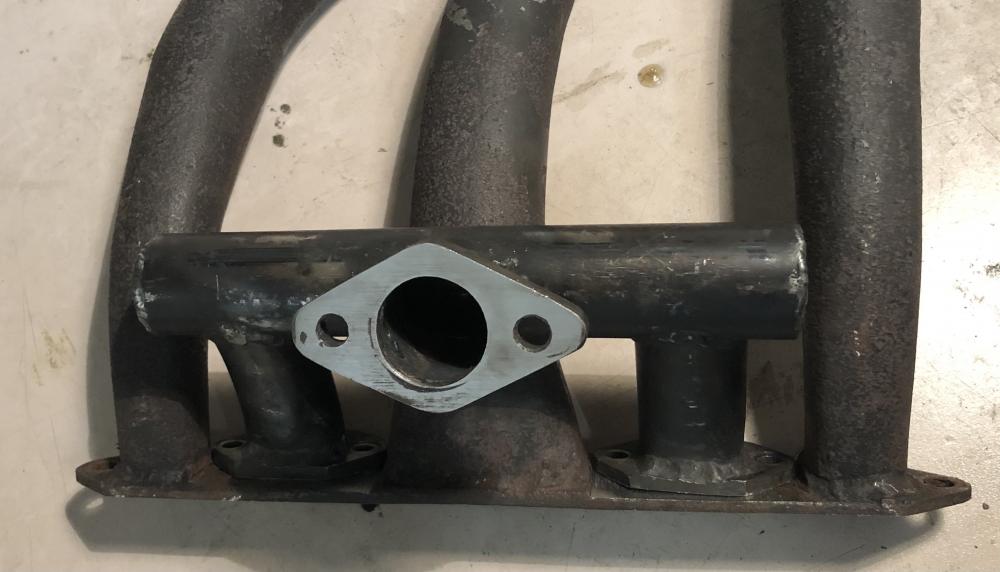Joined: Jan 2019 Posts: 1,604 Threads: 22
Reputation:
14
Location: Bala North Wales
Car type: 1933 RP Standard Saloon
I think that what I would do under the circumstances, would be to order one of each gasket, use the wire-reinforced one to go between the manifold and the block and cut the other one up to give you two smaller gaskets to go between the inlet manifold and the exhaust manifold. You shouldn't need a sealing compound at either joint, but, if you must, then I would use exhaust assembly compound. Similarly, I am not a fan of using sealing compound between the carburetor and manifold - the gasket should be sufficient to seal it. However, I quite like Hylomar Blue.
Hope this helps.
Joined: Aug 2017 Posts: 559 Threads: 89
Reputation:
7
Location: Deepest darkest Kent
Hello Oliver,
have you checked to see if the faces are flat with a steel rule?
Joined: Aug 2017 Posts: 46 Threads: 19
Reputation:
1
Well, the exhaust is quite old, so not as flat as i wish. I adapted both parts as good as i could. With the milling maschine i have, i did not get to the bottom plate of the exhaust.
Joined: Aug 2017 Posts: 989 Threads: 122
Reputation:
3
Location: Melton Mowbray.
I would never contemplate using any sealing compound on either inlet or exhaust manifolds. As Robert says, make sure everything is flat and mating.
Joined: Aug 2017 Posts: 3,330 Threads: 372
Reputation:
16
Car type:
Generally, when checking for flatness, is it the block or manifold that is the problem? And what are the standard iron manifolds like for retaining flatness? I must admit I didn't check flatness and have an exhaust leak to deal with on standard engine.
Joined: Aug 2017 Posts: 559 Threads: 89
Reputation:
7
Location: Deepest darkest Kent
It is usually the manifold that is not flat, especially tubular types which pull when brazed together.
It took me over an hour to set up a Ulster manifold to take a cut to clean the face. Cast iron ones are somewhat easier.
When everything is checked for flatness I bolt everything up without a gasket, if it rejects a 0.0015" feeler all round then I'm happy.
Joined: Aug 2017 Posts: 768 Threads: 13
Reputation:
5
The manifold plate looks far to thin for its purpose.
I have used exhaust jointing paste on badly fitting parts ( Firegum )
Make sure none goes into the inlet ports.
Joined: Aug 2017 Posts: 61 Threads: 16
Reputation:
3
08-11-2020, 01:53 PM
(This post was last modified: 08-11-2020, 01:54 PM by Monsdonnet.)
There are heat resistant sealants available for use on wood burning stoves and chimneys. I bought some from a general hardware store for the exhaust manifold on the 4-pushrod Salmson engine in my GN. These engines have no space for a normal exhaust manifold gasket and normally use a sort of copper washer, but the sealant in addition does a very good job... might be worth a try???
Joined: Dec 2017 Posts: 1,169 Threads: 70
Reputation:
8
Location: Nottinghamshire. Robin Hood County
Car type: Austin Ruby Mk1 1935
I would not use sealants on the exhaust gasket. If either of the jointing surfaces are not flat and cannot be machined flat I would use two gaskets together back to back to try and fill the gap better.
John Mason.
Would you believe it "Her who must be obeyed" refers to my Ruby as the toy.





